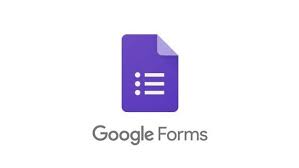Students’ Voices on the Implementation of Visual Text Analysis Approach in Critical Reading Class
DOI:
https://doi.org/10.31597/sl.v3i2.548Keywords:
VTA, Logical Fallacy, critical thinkingAbstract
This research was conducted on investigating students’ perception on how the implementation of visual text analysis approach elevate their critical thinking and drawing the strengths and the weaknesses of this approach in critical reading class for EFL college Students. To convince those two research goals, descriptive qualitative approach with document analysis technique was implemented. Series of document obtained from interview and questionnaire. In addition, during the class, the students were given materials dealing with types and functions of logical fallacy (bandwagon, ad hominem, red herring, straw man, genetic fallacy, appeal to believe, and appeal of authority) which implemented in authentic texts (memes, posters, and comic strips) retrieved from social media (Facebook and Instagram). The result showed that the implementation of VTA approach is beneficial and fruitful in escalating students’ critical thinking, further it was also joyful to have such kind of class for they have a better insight of how to interpret a text beyond the textual feature. In addition, the VTA approach combined with content of logical fallacy also contributed a great deal of logical reasoning understanding which deliver to avoiding and minimizing them easily vulnerable from viral hoaxes mainly in the SARA issues.
References
Classrooms," Language Arts Journal of Michigan: Vol. 25: Iss. 1, Article 3.
Available at: https://doi.org/10.9707/2168-149X.1083
Bleed, Ron. (2005). Visual Literacy in Higher Education. ELI. Retrieved from
https://wcpss.pbworks.com/f/Visual+Literacy+in+HE.pdf
Brumberger, E (2011) Visual Literacy and the Digital Native: An Examination of the
Millennial Learner, Journal of Visual Literacy, 30:1, 19-
47, DOI: 10.1080/23796529.2011.11674683
Flattley, R. (1998). Visual Literacy. Pima Community College, Downtown Campus
Psychology Department. Retrieved from Web site:
http://dtc.pima.edu/psychology/Visual_Literacy.html
http://www.cogsci.rpi.edu/~heuveb/teaching/CriticalThinking/Web/Presentations/Fallacies.pdf
https://web.cn.edu/kwheeler/documents/Logic_Fallacies_List.pdf
Julie (Athman) Ernst * & Martha Monroe (2004) The effects of environment‐based
education on students' critical thinking skills and disposition toward critical
thinking, Environmental Education Research, 10:4, 507-
522, DOI: 10.1080/1350462042000291038
Kurnia, Novi and Astuti, Santi Linda. (2017). Peta Gerakan Literasi Digital Di Indonesia:
Studi Tentang Pelaku, Ragam Kegiatan, Kelompok Sasaran, Dan Mitra Yang
Dilakukan Oleh JAPELIDI. Retrieved from
https://www.researchgate.net/publication/322249856. DOI:
10.21831/informasi.v47i2.16079
Newbold, Curtis (2015). How to do a visual analysis (a five steps process). Retrieved
from http://thevisualcommunicationguy.com/2015/01/12/how-to-do-a-visual-
analysis-a-five-step-process/
Rhodes L.Terrel. (2010). Tips and tools for Using Rubrics. Retrieved from
http://www.sfasu.edu/acadaffairs/images/FINALCRITICALTHINKINGR
UBRIC.pdf
Sadiaman, S. Arief. (2004) Towards Cross Border Cooperation between South and Southeast
Asia: The Importance of India’s North East Playing Bridge and Buffer Role.
Kaziranga. India. Retrieved from
http://www.seameo.org/vl/library/dlwelcome/publications/paper/india04.htm
Sinatra, R. (1986). Visual Literacy Connections to Thinking, Reading and Writing.
Springfield, IL: Charles C. Thomas.
Skene, H. L. Meacock. (2011) .Logical Fallacies. Communication Café, English
Language Development, Centre for Teaching and Learning, University of
Toronto, Scarborough. Retrieved from
https://www.utsc.utoronto.ca/eld/sites/utsc.utoronto.ca.eld/files/resource-
files/Logical%20Fallacies%20HANDOUT%20.pdf
Stokes, S. (2002). Visual literacy in teaching and learning: A literature perspective. Electronic
Journal for the Integration of technology in Education, 1(1), 10-19.
Terenzini, P. T., Springer, L., Pascarella, E. T., & Nora, A. (1995). Influences affecting the
development of students' critical thinking skills. Research in higher education, 36(1),
23-39.
Tillmann, Anneliese, (2012). What We See and Why It Matters: How Competency in Visual
Literacy can Enhance Student Learning. Honors Projects. Paper 9.
http://digitalcommons.iwu.edu/education_honproj/9
Weiler, A. (2005). Information-seeking behavior in generation Y students: Motivation,
critical thinking, and learning theory. The Journal of Academic
Librarianship, 31(1), 46-53.
Downloads
Published
How to Cite
Issue
Section
License
1. Copyright of this journal is possession of Editorial Board and Journal Manager, by the knowledge of author, whilst the moral right of the publication belongs to the author.
2. Legal formal aspect of journal publication accessibility refers to Creative Commons Atribution-ShareAlike (CC BY-SA), implies that this license lets others remix, adapt, and build upon your work even for commercial purposes, as long as they credit you and license their new creations under the identical terms. This license is often compared to “copyleft” free and open source software licenses.
3. Every publications (printed/electronic) are open access for educational purposes, research, and library. Other that the aims mentioned above, editorial board is not responsible for copyright violation















